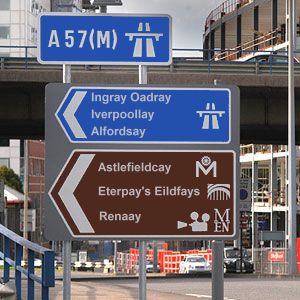Pig Latin
Pig Latin is the oldest human-animal hybrid language still in common usage today (unlike the extinct languages Turkey Greek, Apepache and Linear Dog). Although Pig Latin is still in common usage, since the end of the cold war, the increasing influence of the United States has helped to encourage the spread of the more contemporary language of American Piglish. Ironically, as much of the foreign world adopts American Piglish, the countries closest to the United States, those of the Latin America sub-continent, still staunchly support Pig Latin.
History[edit]
The origins of Pig Latin are largely unknown but its usage in the Northern Mediterranean region has been traced as far back as three-thousand years before common era. Pig Latin gained a great deal of popularity with the rise of Athens and the greek Pig's domination over all other swine of the Western World. Although Greece eventually fell, the Roman's kept many Greek traditions, including forcing the language of Pig Latin on all conquered pigs. It should be noted that there was one Gaulish encampment of boars that held out against Rome and made a point of never learning Pig Latin; this fact is often attributed to the continued survival of the Boar Gallic language.
Eventually the Romans were overrun by the Goths, who brought their own language, Schweingesprach, with their pigs. However, since the Goths were a disorganized bunch, they did not manage to do very much except disrupt Rome. The world later stabilized and Pig Latin remained, though largely for scholarly purposes.
Learning to read and speak Pig Latin[edit]
Phrasebook[edit]
For those of you not looking to invest the time and energy needed to become fluent in Pig Latin, here are a few useful phrases to help you survive if faced with an angry pig who only speaks Pig Latin:
- "Oday ouyay owknay owhay astfay ouyay ereway oinggay?" (Do you know how fast you were going?)
- "Iyay amay oinggay otay avehay otay itewray ouyay ayay ickettay" (I am going to have to write a ticket.)
- "Ichwhay ayway otay Imtay Ortonshay?" (Which way to Tim Hortons?)
- "Ouldway ouyay ikelay iesfray ithway atthay?" (Would you like fries with that?)
- "Igspay akemay oodgay aconbay." (Pigs make good bacon.)
Lesson One[edit]
Pig Latin is an very simple language to learn, all one need do to speak Pig Latin is take the consonants at the beginning of every word, move them to the end of the word and add an A and a Y. For words that begin with vowels and end with a consonant or a Y, you simply add an A and a Y. For words that begin with vowels and end with vowels, for example the words "a" and "I", you add a Y, an A and another Y. You must be careful of the fact that some letters, such as Y and W can be both vowels or consonants; notable examples exist in the words "you" and "ow". Punctuation and capitalization is applied after word translation, as in "Esidentpray Ooverhay" or "irtythay-ivefay". Congratulations, now you are fluent in Pig Latin!
Dialects[edit]
Pig Latin is by no means a highly formalized language and many common dialects exist. Presented below are a few of the more common dialects.
Mexican Pig Latin[edit]
Mexican Pig Latin, which is commonly spoken in Mexico, can be differentiated from standard Pig Latin by the way in which words that start and end with a vowel are translated. Instead of appending a Y, an A and a Y, only an A and a Y are appended.
Norwegian Pig Latin[edit]
Norwegian Pig Latin, which is primarily spoken in Norway, can be differentiated from standard Pig Latin by the way in which words that start and end with a vowel are translated. Instead of appending a Y, an A and a Y, one appends a W, an A and a Y.
Polish Pig Latin[edit]
Polish Pig Latin, which is spoken almost exclusively in Poland or by individuals of Polish descent, follows a slightly different translation system.
In Polish Pig Latin one ignores all exceptions to the rules involving syllables and vowels at the beginning or ends of words, simply moving the first letter to the end and appending an A and a Y.
Related Languages[edit]
There are a number of other languages commonly spoken by pigs which should be noted for comparison.
Communist Pig Dog[edit]
Very little is known about the Communist Pig Dog language, which was used as a Russian code language during the cold war and remains classified to this day.
Boar Gallic[edit]
Boar Gallic is spoken in France and French Canada.
Schweingesprach[edit]
Schweingesprach is a language spoken mostly by wild boars in the Black Forest region of Germany. Since the boars tend to be fairly unfriendly swine, few bother learning the language.


